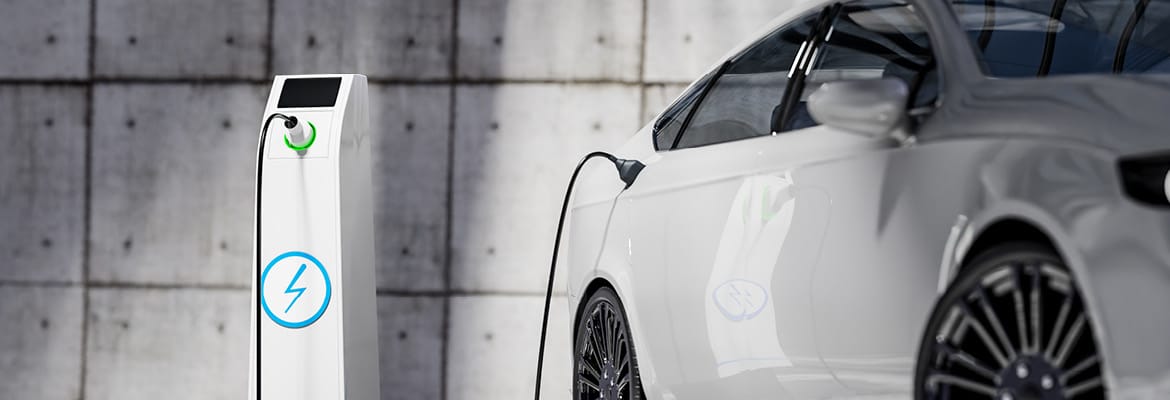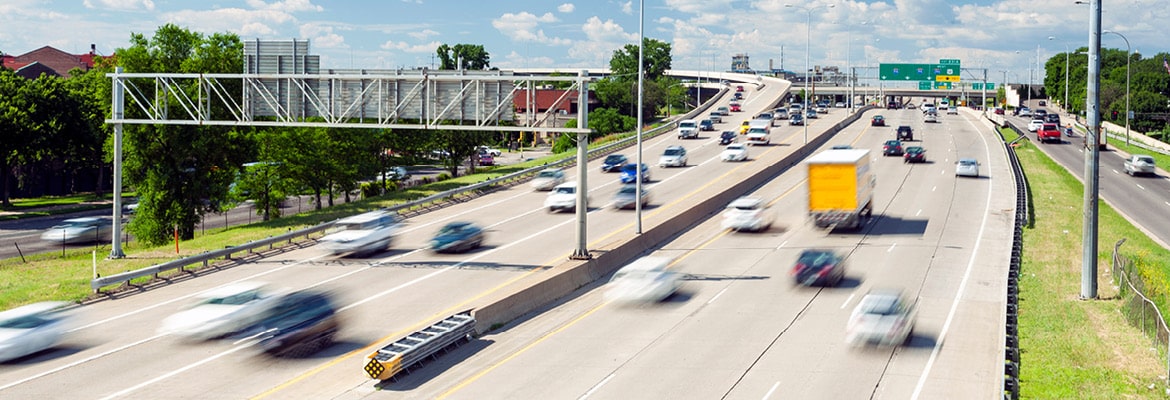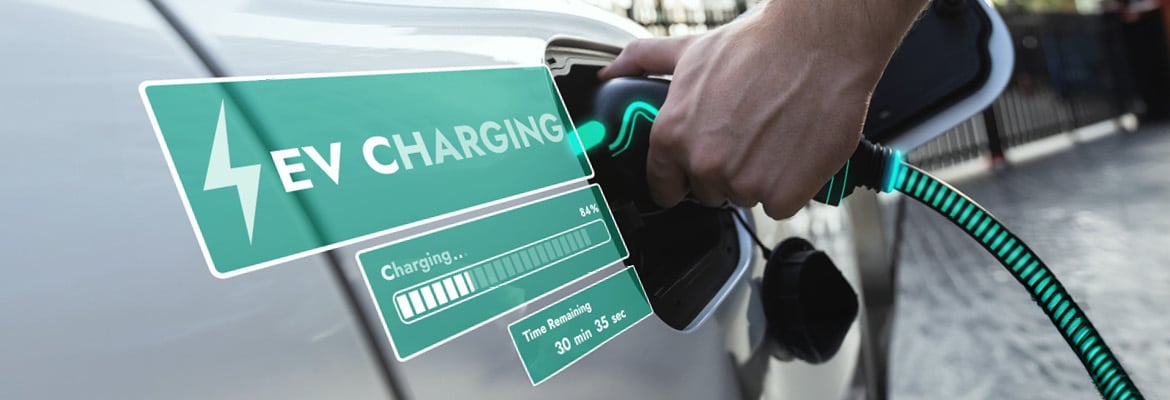Author(s)
Demand for electric vehicles (EVs) slowed in 2023, causing automakers to cut down on production. However, the launch of cheaper models has some experts projecting an acceleration in the market for the upcoming two years. According to Bloomberg, EV and plug-in hybrid vehicle sales are anticipated to increase 21% this year, with 70% of those vehicles being fully electric.
From a higher cost of production to infrastructure limitations and skeptical customers, electric vehicle manufacturers are presented with difficulties that don’t typically affect traditional car companies. Continue reading to learn about the top electric vehicle challenges facing OEMs and shippers.
Supply and demand
The electric vehicle market is currently experiencing a dynamic interplay between supply and demand with overstock becoming a new challenge. While overall EV demand continues to rise, it’s at a much slower pace than in previous years. This has caused EV inventories to pile up at dealerships, according to a report from CNBC. As a result, automakers are trying to strike a balance between supply and demand, but it’s not all smooth sailing.
Cost
It’s no secret that electric vehicles don’t come cheap. By and large, EVs cost significantly more to produce than traditional gas-engine cars. For example, the average cost to produce a Tesla is $36,000, while the average production cost of a Toyota vehicle is just $12,500. And that’s not just because of Tesla’s prestigious brand name—the rare earth materials needed to make the batteries in EVs are the primary driver of this price, and apply to all-electric vehicles.
Manufacturers are spending a lot to build EVs and much of that cost is being passed on to consumers. The high price tag of electric cars is a hurdle that keeps some customers from buying and manufacturers from producing.
Fortunately, the U.S. The Department of Energy offers loans and tax credits like the Fuel Cell Electric (FCEV) Manufacturing Tax Credit and EV and FCEV manufacturing loans to help EV manufacturers catch a break from some of their high expenses while encouraging them to build EVs.
Infrastructure
With traditional combustion engine vehicles being the standard in transportation, the country’s infrastructure has been built around fueling them. Gas stations and service shops are easy to come by just about anywhere in the U.S., but charging stations and EV maintenance specialists are far less common. This creates two problems: more work for the EV manufacturers and more reasons for consumers to be skeptical of EVs.
For dealer vehicles to sell, reliable charging stations are needed nationwide. Some manufacturers, like Tesla and Volvo, are building their own stations. Another solution is working with third-party manufacturers like ChargePoint and Blink to install enough stations to keep their customers charged.
The lack of charging stations in rural areas is a valid concern for many drivers. One of the main reasons customers are hesitant to adopt EVs as their primary mode of transportation is because they fear they won’t be able to charge their vehicles conveniently or will run out of charge on a long drive. Some EV drivers even find themselves waiting in line to charge their batteries, with each charge taking at least 30 minutes to complete—that’s on the low end of charging times. Until more stations are available across the country, many drivers will stay loyal to their traditional gas-powered vehicles.
Battery
EV batteries are the driving force behind the electric revolution, but they’re also the cause of many difficulties for both manufacturers and prospective customers. In addition to being costly and time-consuming to produce, the lithium-ion battery that EVs use only lasts for about eight years and then needs to be replaced.
Car makers, like General Motors (GM), are working with suppliers to source materials. GM is in a contract with South Korean supplier, LG Chem, to obtain supply that could power more than five million EVs for more than 300 miles. Manufacturers have yet to develop an efficient and effective solution for recycling or disposing of expired batteries. Unfortunately, these dead batteries create another environmental concern that is yet to be solved.
EV batteries are also vulnerable to temperature changes more than traditional vehicles. As the temperature drops, so too does the battery’s ability to hold a charge. This makes electric vehicles a less viable option for traveling in freezing temperatures and is another challenge that manufacturers are working to overcome. It’s also something that manufacturers and shippers both need to keep in mind when storing and transporting electric vehicles.
Shipping challenges
To safely transport EVs, carriers may need special training and equipment beyond what is required for moving traditional vehicles. Due to the lithium-ion battery found in all-electric vehicles, transporters must meet special requirements to guarantee the safety of the vehicles.
In addition, EVs weigh more than their gas-powered counterparts, reducing the total capacity of a shipment. For example, a trailer may be able to load 9 ICE vehicles, but only 6 or 7 EVs, requiring more trailers to transport the total order. Since not all carriers are fully qualified to move electric cars, it could take longer to get them to lots and customer driveways.
If you need to move new EV models, consider working with Montway Auto Transport. We have 16+ years of experience moving all types of vehicles and work with some of the biggest names in electric vehicle manufacturing.
Customer adoption
The final challenge facing EV manufacturers is the customers themselves. A few early adopters and forward-thinking motorists were eager to get behind the wheel of an EV, but others aren’t so sure. Not only are people generally resistant to change, but the electric vehicle industry is relatively new. This lack of predictability makes it hard for the average consumer to put their faith in such a significant purchase.
A limited number of vehicle options, combined with a lack of standardization (such as a universal charger for every electric vehicle) and scarce charging stations, turn many car buyers away from battery-powered vehicles. Until these pain points are resolved, there is always going to be a large part of the car-buying market that just isn’t interested in what EV manufacturers have to offer.
Fortunately, as more automakers step into the electric market, these vehicles will continue to become more accessible and reliable. In fact, 141,055 plug-in hybrid vehicles (PHEV) and battery electric vehicles (BEV) were sold in 2023. In total, 4,684,128 PHEVs and BEVs have been sold since 2010, according to Argonne National Laboratory. The Tesla Model Y is the best-selling electric vehicle in the U.S., but other EVs like the Ford Mustang Mach-E, Chevrolet Bolt EV and Nissan Leaf have provided increased variety and affordable options that appeal to more drivers.
Lower prices coupled with government incentives may make EVs a viable option for shoppers. Moreover, the high up-front costs of buying an EV can eventually be offset by ongoing fuel and maintenance savings, making them appealing to some customers.
Safe and efficient EV transportation
Whether you need to move a single car or an entire fleet, Montway Auto Transport has proven success moving all types of vehicles—including electric cars, trucks and motorcycles. With a professional network of over 30,000 carriers, your EVs are in safe hands with Montway. Speak with a logistics specialist at 888-998-4161 to learn more.








